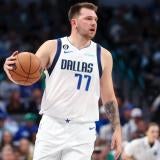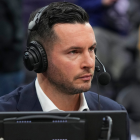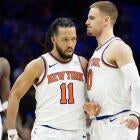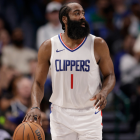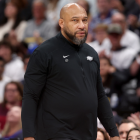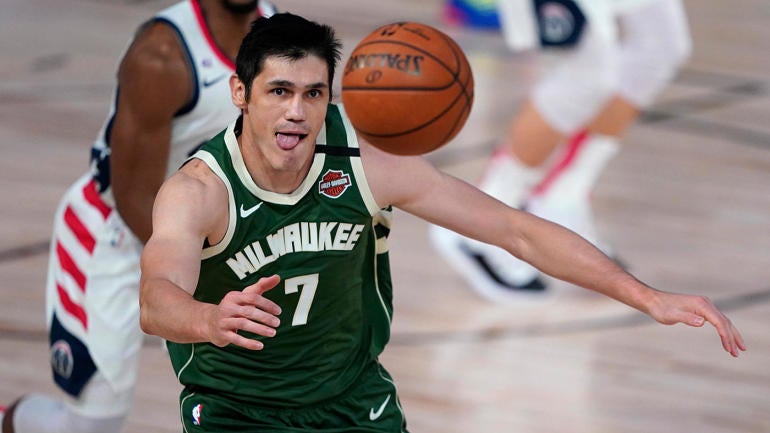
The teams that are in the best shape right now are the ones that have mostly completed their free agency business. That tends to bear out in most offseasons. The best players usually decide quickly. Teams making several signings a week into the frenzy usually have to do so out of desperation. Pickings are slim after the opening wave.
Still, the market never quite dries up completely. There are still worthwhile free agents on the market, if only for the purpose of filling regular-season minutes. Every now and then, something better emerges. The Lakers landed Dwight Howard in August. The Blazers got Carmelo Anthony in November. Contributors exist for teams willing to look hard enough to find them. Several of the following 40 (as of Wednesday morning) players will have a chance to make actual contributions this season.
The superstar
We're just covering our bases here. Technically, Anthony Davis is a free agent. No, your team is not signing him. He is merely taking his time to sign as he considers possible deal-structures in Los Angeles. Any contract he signs will include a player option. If he commits for one year, he aligns his free agency with LeBron James' and opens up the possibility that he might take a paycut to recruit another star. If he commits for two years, he would become a free agent again with 10 years of NBA experience, maximizing the value of his next contract. If he commits for four (or five) years, he gets the most possible money secured right now. The Lakers aren't in a rush. He can sign whenever he'd like.
The big men
Gibson and Ilyasova aren't flashy, but they're far functional. Ilyasova's defense may play his shooting off the floor in the late stages of the postseason, but it's a nice tool to have at the end of a bunch. Gibson's shot never extended beyond the mid-range, but his defense and culture-setting would play well almost anywhere. He's one of the few remaining free agents who might be able to soak up some real playoff minutes. O'Quinn has struggled over the past two years, but he's only 30. With the right fit he could return to his typical level of bench productivity.
The shooters
I present you, different flavors of all-offense regular-season fare. In Korver, you have one of the greatest catch-and-shooters in NBA history. He's about to turn 40, and his mobility reflects that. Then there's Quinn Cook, a slightly worse shooter with a bit more ball-handling sprinkled in that has been to the past three NBA Finals in case you need a good luck charm. Finally, we have Jordan McRae, more of an all-around shotmaker who is one of the only double-digit scorers from last season still on the market. These are largely empty-calorie signings with the possible exception of Korver, but hey, bench scoring has value in a season that might include lengthy COVID-19-induced absences from star players.
The ball-handlers
Napier is probably the only viable full-time backup point guard in this group, and is a steal for the minimum. Belinelli can still make 3s, but he can't do much else. Interest in 41.2 percent 2-point shooters is usually minimal. Yogi Ferrell has the Dallas stink on him. He thrived as a backup ball-handler under Rick Carlisle, but everybody does. His Sacramento stint may have exposed him, but he's still only 27 and likely has believers around the NBA.
The defenders
Roberson hasn't been healthy since the Mesozoic era, but he's proof of why these three players deserve NBA contracts. The Thunder came a game short of the NBA Finals with Roberson in their rotation despite his almost total lack of offensive value. No, someone like Roberson, Harrison or Payton should not start or even play a major role. But sometimes, having a nuclear defender sitting in your back pocket for the right matchup can swing a series. Luguentz Dort just did that for the Thunder against the Rockets. The best version of Roberson is that good. Harrison and Payton are a notch below, but would qualify as stoppers at their position if given the right chance.
The locker-room guys
All three of these players can still shoot, but realistically, at 35, they're probably past the regular rotation phase of their careers. That shouldn't bother pursuing teams. Their primary value is off the court. All three are extremely highly-regarded teammates who can mentor younger players or relax the atmosphere in a contending locker room. The Lakers swore by Dudley's culture-setting powers last season. Most contending teams have a veteran of this ilk somewhere on the bench.
The big names, Los Angeles division
- Dion Waiters
- JR Smith
- Reggie Jackson
Waiters actually had his moments in the bubble, though an injury and the stunning emergence of Playoff Rondo cost him any chance at minutes. Smith and Jackson? Their stays in Orlando weren't quite as pleasant. If you exclude a 5-of-10 outburst in the final seeding game, Smith shot 9 of 38 from the field at Disney. Jackson was slaughtered defensively by Carlisle's ball-handlers and Jamal Murray. Jackson and Waiters are still probably young enough to at least hold microwave scoring roles on decent teams, but Smith just doesn't physically have it anymore.
The big names, Brooklyn division
Crawford just barely snuck onto this list after playing six total minutes for Brooklyn last season. He'll always get the "true hooper" push for a roster spot, but at 40, his time has passed. Johnson was far more useful in Orlando, recapturing a bit of the defense that stood out when he played for the Heat while shooting nearly 39 percent from behind the arc. Beasley signed in Brooklyn but never played for the Nets, and after his miserable Lakers season, his time in the NBA might have come to an end.
The (not as) big names, everywhere else division
All recipients of big contracts that didn't work, but all possibly capable of future contributions at a low enough price. Carroll was a key contributor on a 2019 playoff team, and while the D portion of his 3-and-D portfolio has slipped, he's still big and something resembling an average shooter. If Kidd-Gilchrist was an average shooter, he'd be a starter right now. That's how good he's been defensively, but he runs into the same stigma players like Roberson have. Mahinmi can eat some regular-season innings at center, but has little postseason utility.
The possibly helpful wings
Oh, hey, a group of actual contributors! Troy Daniels can shoot. That warrants a roster spot, and had his shots gone in at its usual rate, he probably would have retained rotation minutes for the champion Lakers. Hollis-Jefferson does practically everything except shoot. But watch any Toronto bench unit and you'll notice him flying around the court like the Tasmanian Devil, constantly just doing things, even if those things are of inconsistent value. Energy and defense matter. Robinson brings a bit of it with a half-decent shot. At small forward, that alone is enough to warrant minutes on most teams. If he matches the 40 percent 3-point figure he hit in Golden State? He might even be a starting-caliber player. That's unrealistic, but at a premium position, his raw skill set alone has material value.
The buyout bunch
- DeWayne Dedmon
- Zhaire Smith
- Nicolas Batum (probably?)
OK, we're really talking about stretch provision victims, but why pass up such an easy alliteration? Dedmon at the minimum is an excellent value, the rare big man who provides the combination of shooting, rim protection and athleticism. He doesn't have any of the three in spades anymore, but he fits onto virtually any roster with that versatility. Batum has lost a fair bit of his versatility, and if Boston and Charlotte ultimately agree to a Gordon Hayward sign-and-trade, he won't even be available. If not? He's a former high-caliber starting forward who can at least still shoot a bit and defend bench wings. There's no telling what Smith is. Injuries have ruined the first two years of his career. If a team is confident in its medical staff, why not take a swing on his potential as the former No. 15 overall pick?
The two-way restricted free agents
Every season produces a few new two-way breakouts. Alex Caruso and Danuel House Jr. both ascended from the G League to provide real contributions to winners. These three are next in line. McLaughlin proved himself at least to be a viable backup point guard last season. Chiozza's scoring punch shined through later in the season. Jeffries played relentless defense in the bubble. All three are restricted, so they'd need genuine offers to be stolen, but if Caruso and House are any indication, the upside is there.
The old-timers
Thabo Sefolosha is not technically retired, but at 36, he's nearing the end and his numbers reflected that last season. He might have one last go-round in him as a two-way wing, but don't expect too much. Marvin Williams actually can still play. He was downright decent for Milwaukee in Orlando, but chose to retire despite presumed interest. Expect teams to bug him about a possible return. The Lakers and Clippers did so with Darren Collison last season, but couldn't convince him to come back. He's only 33, though, and rumors suggested he was open to the idea at the trade deadline.
Three more big men
And so, we've hit the bottom of the barrel: the worst remaining name-brand examples of three common archetypes. Bell is your switch big man, but he washed out on a Warriors team tailor-made for his skill set. Kaminsky is a stretch big whose overall scoring is not nearly consistent enough. Henson is a rim protector and rim runner who doesn't do either at a particularly high level. As with most minimum big men, these guys can eat minutes. That's about as far as they go. At this point in free agency, it's unrealistic to ask for much more.








